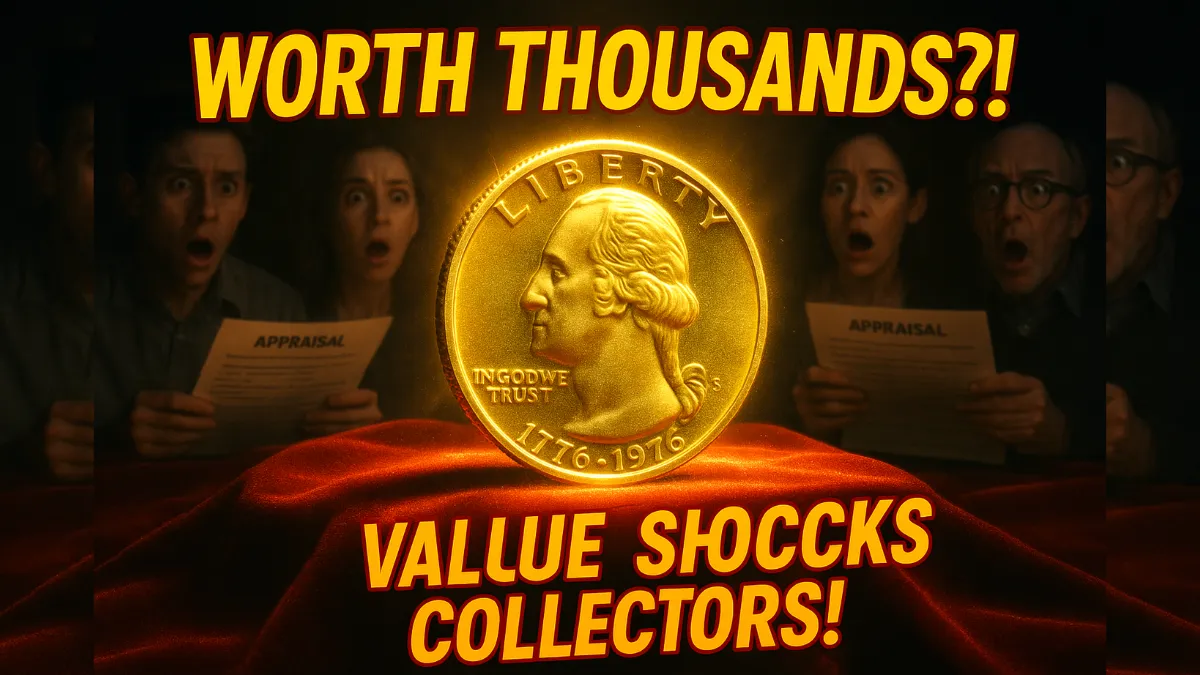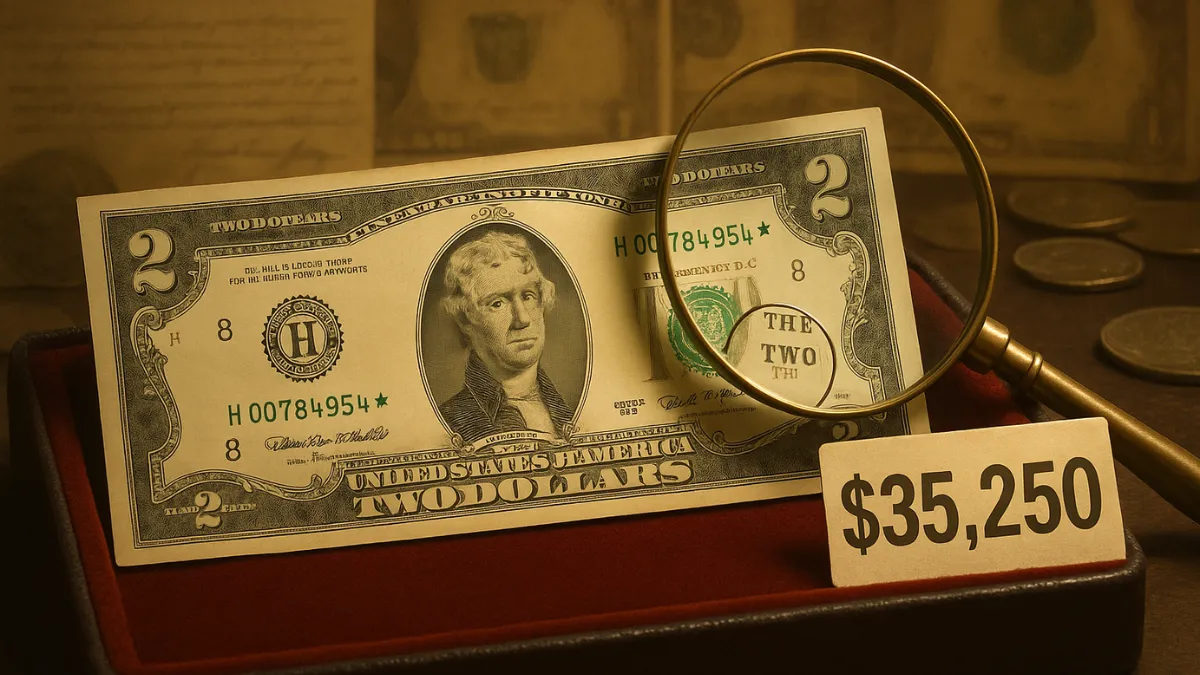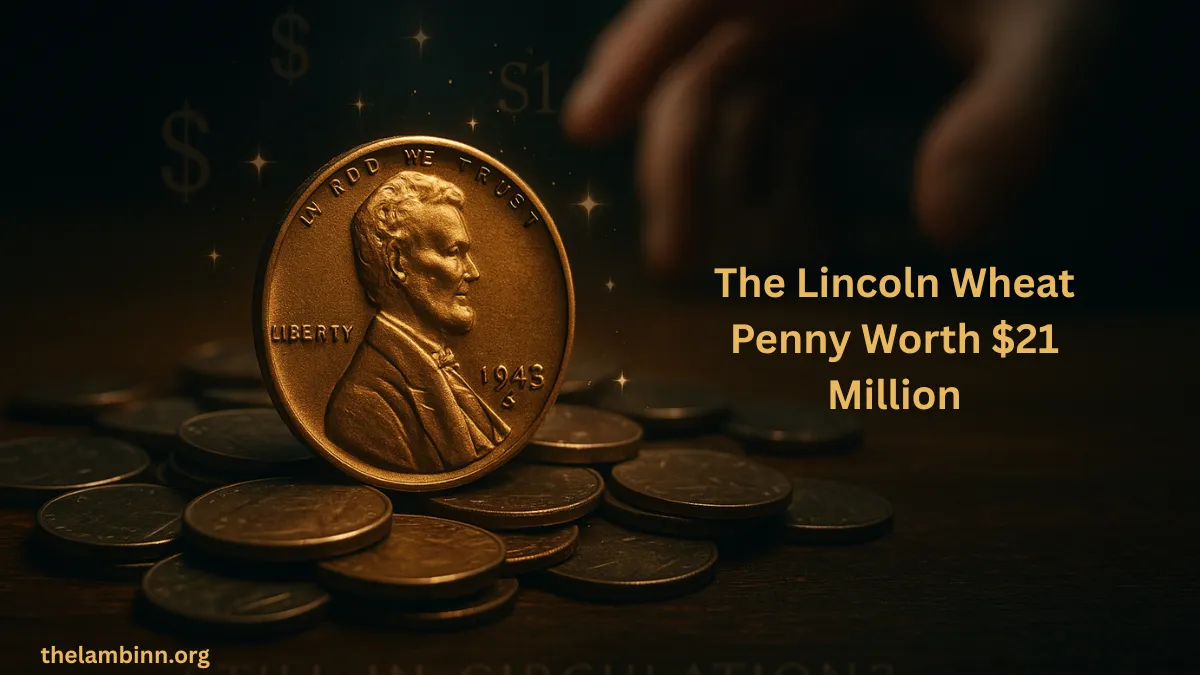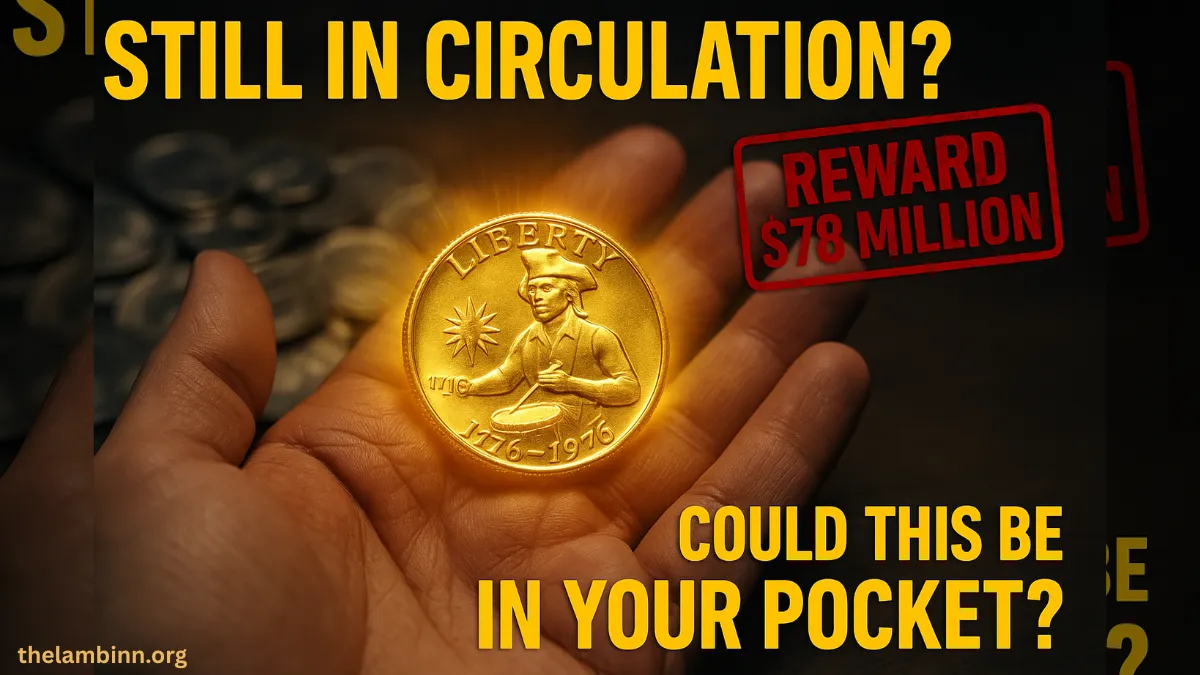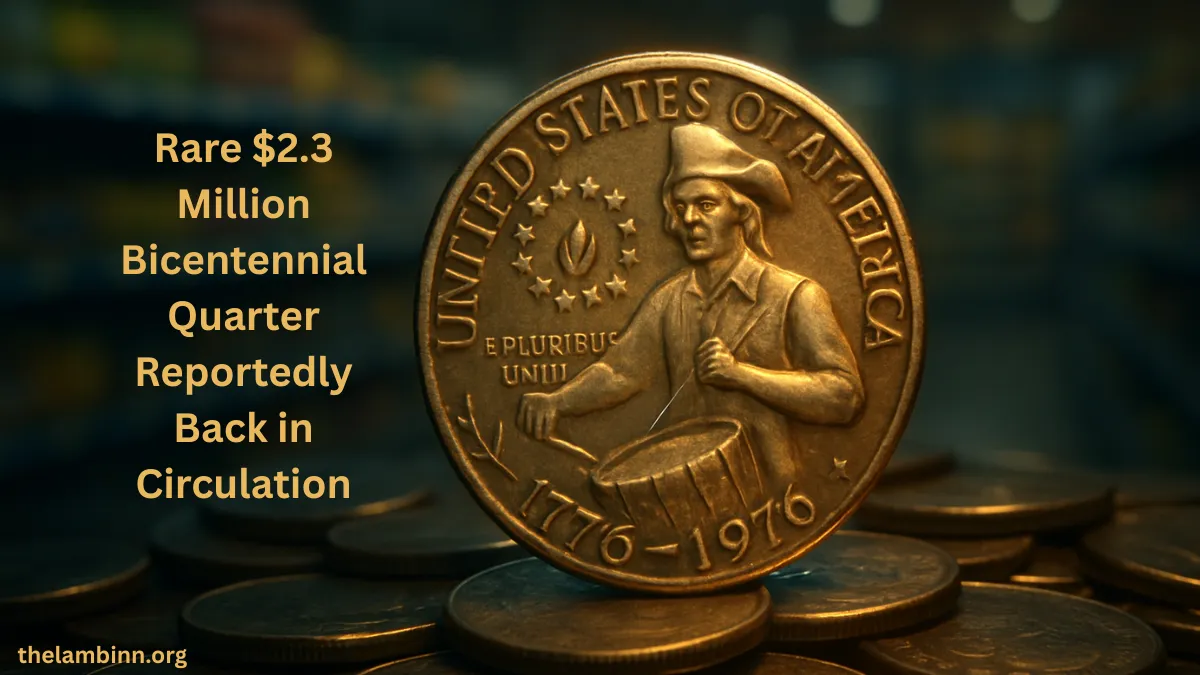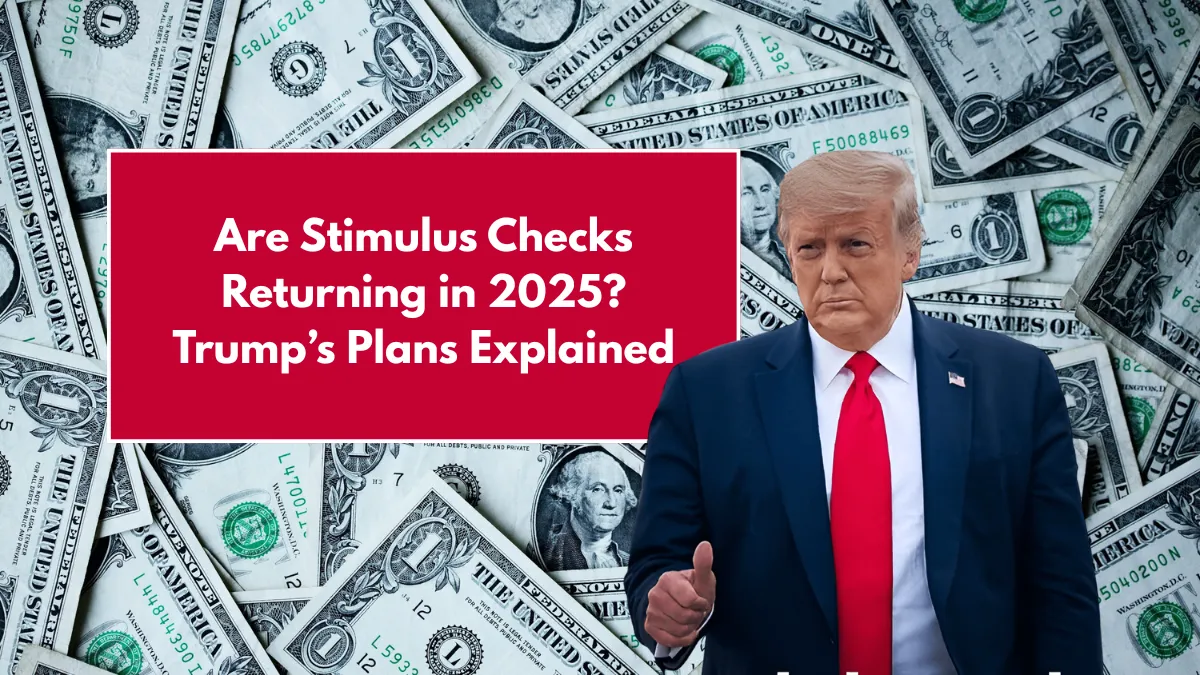The Million-Dollar 1976 Bicentennial Quarter: A Small Coin with Life-Changing Value
Could the humble quarter in your pocket actually be worth over a million dollars? While it might sound too good to be true, one coin from the 1970s has amazed collectors and experts alike with its potential to transform someone’s financial destiny. The 1976 Bicentennial Quarter isn’t just a commemorative piece—it’s a surprise treasure in disguise.
Thanks to rare errors and extraordinary features, a handful of these coins have become shockingly valuable. This article explores the coin’s origin, the mistakes that make it a collector’s dream, and real auction sales that show its true potential.
The Story Behind the 1976 Bicentennial Quarter
The U.S. Mint released the 1976 Bicentennial Quarter to honor America’s 200th birthday. Replacing the regular eagle design, this special edition showcases a Revolutionary War drummer boy standing in front of a torch surrounded by thirteen stars—representing the original colonies.
Created by Jack Lahr, the coin includes the dual date “1776–1976,” giving it a distinctive appearance. Though around 1.7 billion of these quarters were produced, certain rare versions—especially those with mint errors or made from different materials—have become prized collector’s items and are extremely rare in circulation today.
Mint Errors That Can Make These Quarters Extremely Valuable
Many collectors chase coins because of their historical background, but minting mistakes often make coins truly special. When the minting process goes wrong, it can create one-of-a-kind variations that become high-value collectibles. The 1976 Bicentennial Quarter is no exception. These are the most remarkable error types that make these coins skyrocket in value:
Double Die Errors (DDO & DDR)
Double die errors occur when the design on a coin is accidentally duplicated, creating noticeable doubling on words or numbers. For the Bicentennial Quarter, you might find doubling on words like “LIBERTY,” “IN GOD WE TRUST,” or the date.
These can fetch between $2,000 and $5,000 depending on their grade and clarity. Coins graded by services like PCGS or NGC are especially valuable in this category.
Wrong Planchet Strikes
Occasionally, a Bicentennial Quarter was struck on a blank (planchet) intended for another coin—like a penny or dime. These are called off-metal errors and are incredibly rare.
If authenticated by a grading service, these mistakes can increase a coin’s value dramatically, with some selling for $10,000 to $25,000 or more depending on condition and rarity.
Missing Clad Layer or Split Planchets
Some quarters were minted without their top nickel layer or had a partially split surface, exposing a copper color underneath. These types of minting flaws often appear reddish or have irregular textures.
Depending on their condition and how much of the layer is missing, these coins can command prices from $2,000 to over $10,000 among knowledgeable collectors and auction houses.
Brockage Errors (Full and Mirror)
Brockage errors result when one struck coin remains in the press and imprints its image onto another coin. This causes a mirror-like, reverse image on one side. Full brockage Bicentennial Quarters are extremely rare. Collectors highly seek these unique mistakes, and they can bring in between $15,000 and $50,000 depending on the condition and clarity of the mirrored strike.
Eye-Popping Auction Results
Over the years, a few Bicentennial Quarters have shocked the numismatic world with impressive auction prices. Here are a few headline-grabbing sales:
- Silver Proof 1976 Quarter with a double die: Sold by Heritage Auctions for $13,500 in near-perfect PR69 condition.
- Quarter struck on a 1-cent planchet: Verified by NGC, this rare piece sold privately for $25,000.
- Double struck and 80% off-center error: Sold for $8,800 at a 2021 public auction.
- Full brockage strike: This incredibly rare version fetched $40,000 at a Stack’s Bowers event.
- Million-dollar rumor: While unconfirmed, some experts believe a one-of-a-kind error version could exist and potentially be worth over $1 million.
How to Spot a Rare 1976 Bicentennial Quarter
Think you’ve got a valuable quarter? Start by checking some key characteristics that could set your coin apart:
- Weight check: A normal quarter weighs 5.67 grams. Use a digital scale to detect any variation, which might indicate a wrong planchet.
- Color clues: A dull gray tone means silver; reddish tones might show a missing clad layer or copper base.
- Design flaws: Look closely for doubled words, misaligned details, or uneven edges.
- Mint marks: A magnifier can help spot missing or altered mint marks that increase a coin’s rarity and value.
Uncovering Hidden Treasures
Coin experts agree that many rare error quarters from 1976 might still be hidden away. During the high-speed production for the bicentennial celebration, not every mistake was caught by quality control. These flawed coins may still be hiding in everyday spots—old change jars, forgotten wallets, or inherited collections. With awareness growing, more people are beginning to recognize the true value of these unnoticed treasures just waiting to be discovered and appraised.
What to Do If You Think You’ve Found One
If your quarter looks odd or matches the descriptions above, here’s how to handle it carefully and smartly:
- Avoid cleaning: Never polish or wash the coin—it can destroy its value instantly.
- Weigh and photograph: Use a high-precision scale and capture detailed photos from all angles.
- Get professional grading: Send the coin to PCGS, NGC, or another expert grading service for authentication.
- Contact auction houses: Heritage Auctions or Stack’s Bowers can help you get the best return if your coin proves valuable.
FAQs
Q: How do I know if my 1976 quarter is rare or valuable?
A: Look for errors like doubling, weight differences, or unusual metal colors.
Q: What errors are the most valuable?
A: Off-metal strikes, double dies, and brockage errors usually bring the highest prices.
Q: Can I sell my rare Bicentennial Quarter?
A: Yes, once authenticated and graded, these coins can be sold through dealers or auction houses.
Q: Is the million-dollar quarter real?
A: It’s still unconfirmed, but collectors believe a unique version could eventually reach or exceed that value.
Last Thought
The 1976 Bicentennial Quarter serves as a perfect reminder that even the most ordinary objects can hold extraordinary value. Whether hidden in your pocket change or tucked away in an old jar, one of these special coins could be a financial windfall waiting to happen. With just a little curiosity, a sharp eye, and a bit of research, you might uncover a numismatic gem worth thousands—or even a million dollars.
Walter is a dedicated finance blog writer known for his insightful analysis and practical money advice. With a strong background in financial planning and market research, he simplifies topics like saving, investing, and retirement for readers of all levels. Walter’s goal is to help individuals take control of their finances and build a secure financial future through informed decisions.
